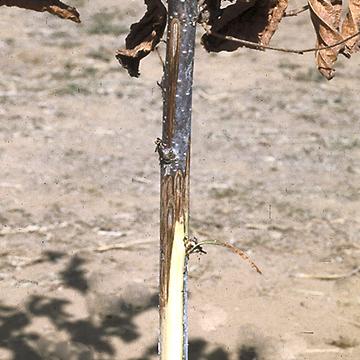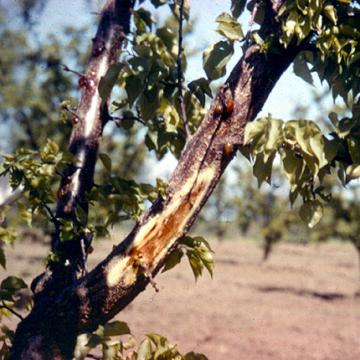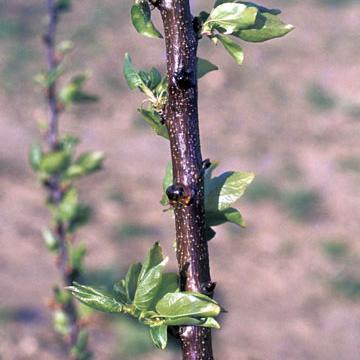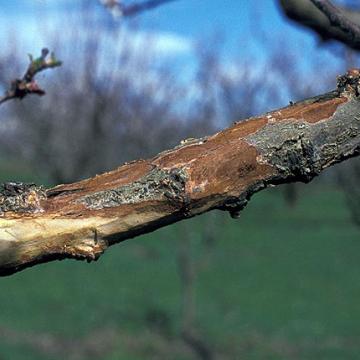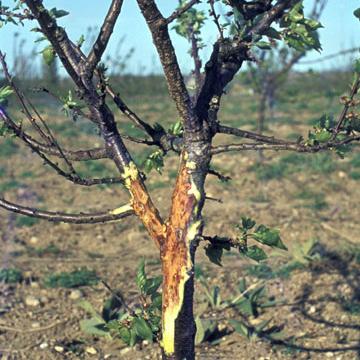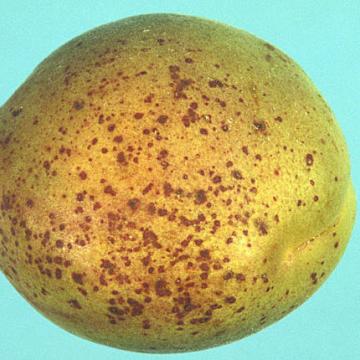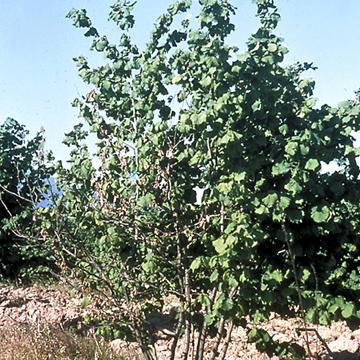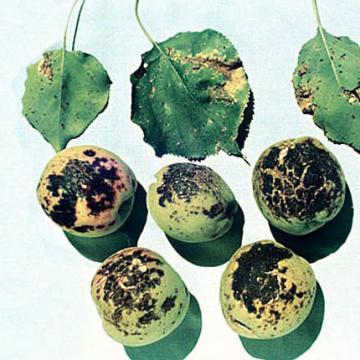DISEASE: Bacterial blight
HOST: Hazelnut
Diseased young tree with discoloration of the cambium. Dieback of young twigs and branches is characteristic. Other typical symptoms are bud and twig necrosis and small, angular or round, water-soaked leaf spots.
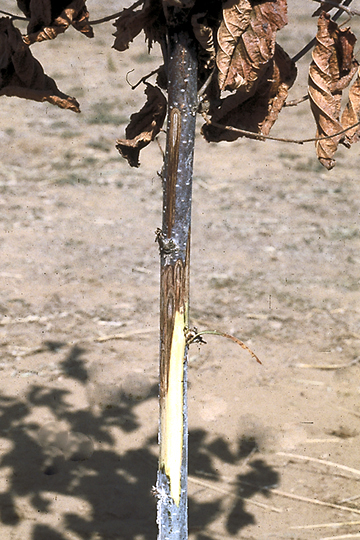
Bacterial blight | Hazelnut
DISEASE: Bacterial blight
HOST: Hazelnut (Corylus americana)
PATHOGEN: Xanthomonas arboricola pv. corylina
SOURCE: J. Pscheidt
DISEASE: Bacterial canker and blast
HOST: Apricot
Apricot with typical reddish brown-discolored tissues beneath the bark and gumming around infected areas.

Bacterial canker and blast | Apricot
DISEASE: Bacterial canker and blast
HOST: Apricot (Prunus armeniaca)
PATHOGEN: Pseudomonas syringae pv. syringae
SOURCE: S. Sampson, M. Shurtleff
DISEASE: Bacterial canker and blast
HOST: Apricot
Young infected twig with droplets of bacterial ooze on stem.
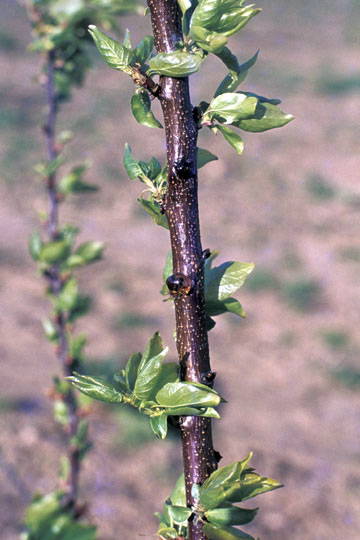
Bacterial canker and blast | Apricot
DISEASE: Bacterial canker and blast
HOST: Apricot (Prunus armeniaca 'Moorpark')
PATHOGEN: Pseudomonas syringae pv. syringae
SOURCE: J. Young
DISEASE: Bacterial canker and blast
HOST: Apricot
Bacterial canker has many symptoms. Typical symptoms are brown, sometimes reddish brown, internal tissues and rough, cracked bark.
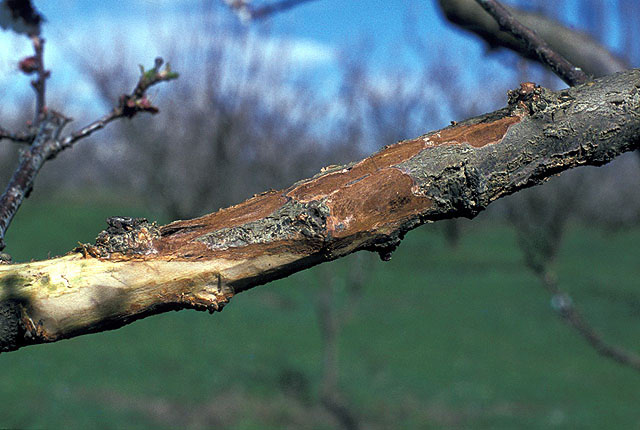
Bacterial canker and blast | Apricot
DISEASE: Bacterial canker and blast
HOST: Apricot (Prunus armeniaca 'Moorpark')
PATHOGEN: Pseudomonas syringae pv. syringae
SOURCE: J. Young
DISEASE: Bacterial canker and blast
HOST: Apricot
Infected apricot with sparse foliage (some twigs with no foliage) and a discolored area exposed where bark was removed.
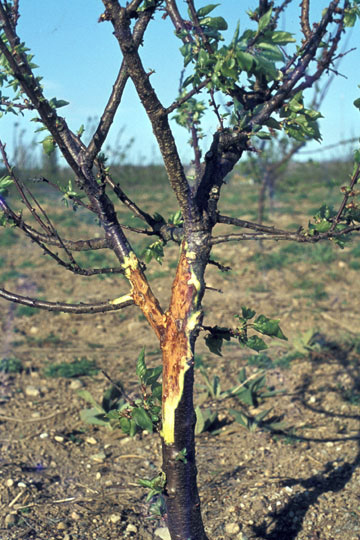
Bacterial canker and blast | Apricot
DISEASE: Bacterial canker and blast
HOST: Apricot (Prunus armeniaca 'Moorpark')
PATHOGEN: Pseudomonas syringae pv. syringae
SOURCE: J. Young
DISEASE: Bacterial canker and blast
HOST: Apricot
Fruit spot phase with numerous reddish necrotic spots.
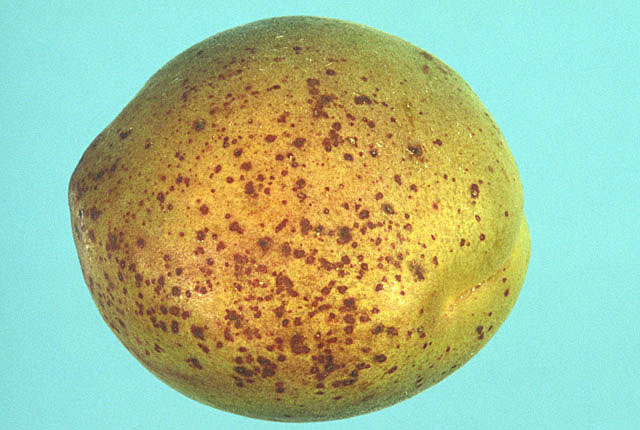
Bacterial canker and blast | Apricot
DISEASE: Bacterial canker and blast
HOST: Apricot (Prunus armeniaca 'Moorpark')
PATHOGEN: Pseudomonas syringae pv. syringae
SOURCE: J. Young
DISEASE: Bacterial canker
HOST: Hazelnut
Primary symptoms are failure of buds to break and withering and death of new foliage in spring. Dead leaves remain attached to limbs after normal leaf fall.
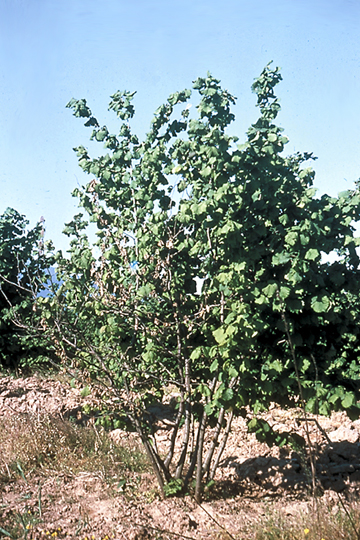
Bacterial canker | Hazelnut
DISEASE: Bacterial canker
HOST: Hazelnut (Corylus americana)
PATHOGEN: Pseudomonas syringae pv. avellanae
PATHOGEN SYNONYM: Pseudomonas avellanae
SOURCE: P. Psalidas
DISEASE: Bacterial leaf spot
HOST: Snapdragon
Leaves with large necrotic areas with brownish centers and purplish margins. Lesions are slightly sunken.
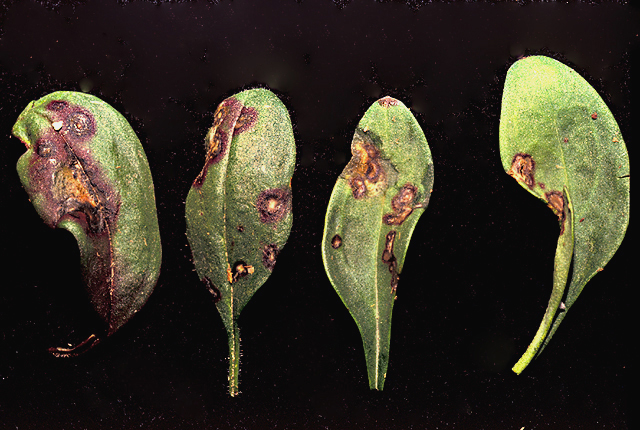
Bacterial leaf spot | Snapdragon
DISEASE: Bacterial leaf spot
HOST: Snapdragon (Antirrhinum majus)
PATHOGEN: Pseudomonas syringae pv. antirrhini
SOURCE: R. Raabe
DISEASE: Bacterial spot
HOST: Apricot
Fruit with black scabs and cracks, and leaves with brown lesions, some coalescing to form large necrotic areas.
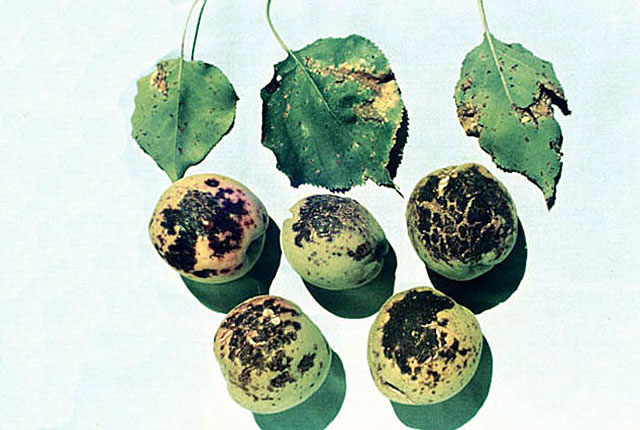
Bacterial spot | Apricot
DISEASE: Bacterial spot
HOST: Apricot (Prunus armeniaca 'Moorpark')
PATHOGEN: Xanthomonas arboricola pv. pruni
PATHOGEN SYNONYM: Xanthomonas campestris pv. pruni
SOURCE: J. Young


